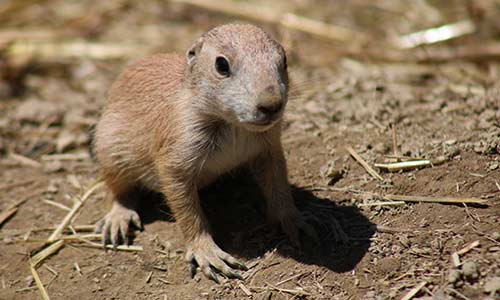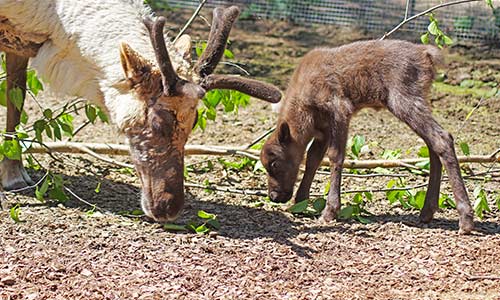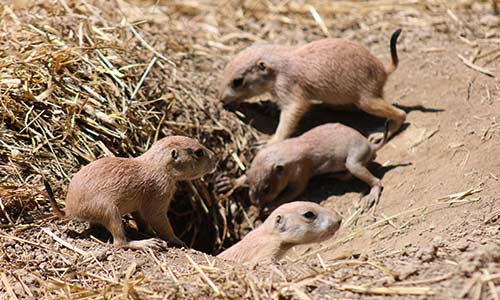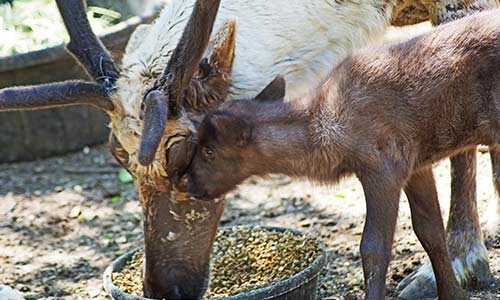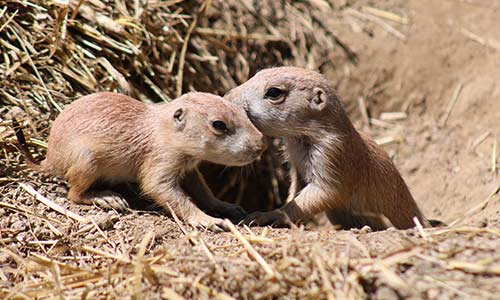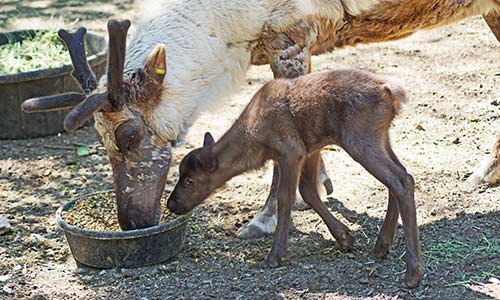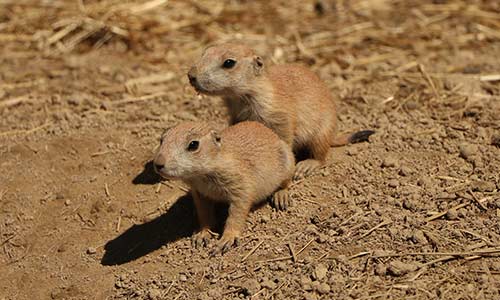New furry faces can be seen at the Zoos
Thursday May 25, 2017
The spring baby boom continues at Franklin Park Zoo and Stone Zoo following the recent births of prairie dog pups and a reindeer calf.
At Franklin Park Zoo, five prairie dog pups recently emerged from their burrows at the prairie dog exhibit located in Nature’s Neighborhoods, the new George Robert White Fund Children’s Zoo.
The pups’ birth date is estimated to have been around April 1. Pups are born blind and hairless, and do not make an appearance outside of the burrow until they are about six weeks old. The pups can now be seen exploring the exhibit alongside the adult prairie dogs.
“It’s hard not to be amazed by these incredible little creatures. Prairie dogs are highly social animals and it will be fascinating for our guests to watch the pups grow up,” said John Linehan, Zoo New England President and CEO.
Black-tailed prairie dogs are not actually dogs at all. They are small, stout, tan rodents with a lightly white or buff-white belly. They have short black tails, small ears, dark eyes and long claws used for digging.
Black-tailed prairie dogs are found in short-grass prairie habitats of western North America, from southern Saskatchewan down to northern Mexico. They form complex, widespread underground burrow systems, and avoid areas of heavy brush or tall grass due to reduced visibility. Prairie dogs live in what are called towns or colonies. These colonies are further divided into territorial neighborhoods called wards. Within the wards are coteries, which are family groups comprised of a male, one to four females and offspring under two years old.
A few days after the first prairie dog pup emerged from the burrow, a reindeer was born at Stone Zoo.
Born on May 17 and weighing 12.9 pounds, the female reindeer calf has been doing well and can be seen on exhibit with her mother Holly. As with any new birth, the veterinary and animal management staffs are closely monitoring mother and baby.
“Holly is an experienced mom and she is very attentive to the calf. The calf is very curious and can be seen exploring the exhibit,” said Pete Costello, Assistant Curator of Stone Zoo.
The reindeer is one of 36 species of deer in the world. These animals can be found in the arctic tundra, as well as in boreal forests in Norway, Sweden, Finland and Russia. They have been domesticated in Scandinavia for thousands of years. They have two thick coats – an outer coat and undercoat – that help keep them warm in cold temperatures. At this time of year, reindeer shed their thick winter coats in preparation for the warmer months ahead.
Reindeer are herbivores and enjoy a diet of leaves, bark, moss and lichen, and they have antlers that are shed and re-grown each year. They are the only species of cervid (member of the deer family) where both males and females have antlers.
It has been a busy spring for Zoo New England’s Franklin Park Zoo and Stone Zoo. At Franklin Park Zoo, other recent births and hatchings include a bongo calf, Siberian crane chicks, a pygmy falcon chick and a Cabot’s tragopan chick. Stone Zoo also recently celebrated the birth of red-rumped agouti twins.
Reindeer images courtesy of Dayle Sullivan-Taylor

